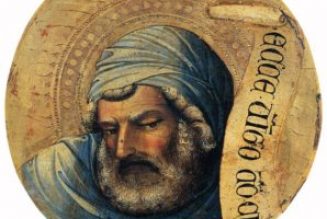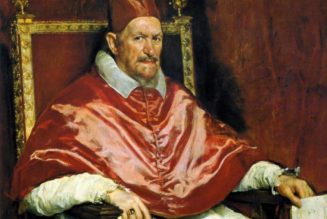 |
Eastertime rejoices in life, when even things as old as the world are made new again. It is at this time of resurrection that Catholics may also remember those who have passed away in the hope of rising again, and especially those whose memory might be seasoned with the brightness they brought to life by their lives—how they participated in Christ’s work to make all things new. A little man from Connecticut who brought immense joy to our children by his bright and beautiful gifts is deserving of a thought and a prayer this Easter.
Thomas Anthony “Tomie” dePaola, the celebrated American author and illustrator, died on March 30 at the age of 85, having suffered a fall in the barn that served as his studio. There are very few children’s book artists and authors who are immediately recognizable and whose contributions to children’s literature deserve that recognition. Tomie dePaola is one of these, and his contribution to an authentic Catholic children’s literature is significant, evoking the passion of a joyful man who thought it was his vocation to bring children to God through his art.
Growing up in Connecticut in an Irish-Italian family, Tomie dePaola was a Catholic all his life, and after studying art at New York’s Pratt Institute he joined a Benedictine monastery in Vermont. After six months, he determined monasticism wasn’t for him, saying “he couldn’t stand the silence.” DePaola said further that the monastery “solidified, not religious, but some deep spiritual values,” which he learned from the artistic heritage of the Benedictine tradition as a resident artist.
Sadly, dePaola determined Catholicism (and its conservatism) wasn’t for him either, but he seemed one of those who remained Catholic in pectore, especially in his heartfelt sensitivities as an artist, a decorator of Catholic churches and monasteries, and a storyteller for children. Tomie dePaola may not have been religious, but he was certainly reverent. Though he lost the Faith, he never lost his love for the goodness, beauty, and perhaps truth of what he had once believed.
DePaola saw the splendor of the Catholic Faith with its enduring power, its charm, its sacred mystery, and the mystical way it lent itself to lore and legend. As a writer and illustrator of children’s books, he famously presented the Faith, the heroes of the Faith, and the traditions of the Church with a vitality that is all but unmatched in the modern children’s library. His style of clean, strong lines coupled with bright, bold color is appealing to children and even reflective of spiritual truth in its quasi-iconic fashion.
In his drawings, the straightforwardness of the medieval, the vibrancy of the Romanesque, the authenticity of folk art, and the Byzantine energy of a spiritual dimension all come together to make Tomie dePaola’s picture books beautiful and engaging. “I simplify,” he used to say, and that simplification speaks to the young imagination in forms both whimsical and recognizable. Children can see two worlds existing together harmoniously in his paintings—whether with Strega Nona, Mother Goose, Fin M’Coul, Bible stories, or Our Lady of Guadalupe—which is a wonderful thing to children because it is a wonderful truth.
Tomie dePaola sensed particularly in the stories of the saints that saintliness is fantastic, and so his portrayal of it in his folk tales is absolutely fitting. The truth of sanctity is often more accessible through the wonderful tales that dePaola told and illustrated. His retelling of the stories of saints—such as St. Christopher, St. Francis, St. Patrick, St. Benedict, and St. Scholastica—offers a heightened element to the lives of those saints, allowing them to appear clearly as citizens of two worlds that they helped bring together in Christ.
DePaola’s hard lines, soft brushstrokes, and bright palette, coupled with his straightforward writing style, made the invisible aspects of sainthood and sanctity visible, tangible, and attractive, giving the heroes of the Church, and even the stories of Christ, a dimension that goes beyond stuffy histories or plain catechisms. By capturing the extraordinary features of our holy ancestors, Tomie dePaola’s retelling of pious legends emphasizes the reasons why the characters of these stories are saints. He certainly thought the parables and miracles of Christ and the lives and legends of the saints were profound in their message, and important for children to cherish, and so he gave them the quaint allure and aspect of fairy tales.
Like the juggler in his story The Clown of God, Tomie dePaola plied his dazzling arts of joy, wit, and color to give praise to a reality that he wondered about, hoping he might somehow give glory to God as the juggler did. “If you give happiness to people,” the tale reads, “you give glory to God as well.” The stories Tomie told in his life gave happiness to many people, and now the story of his own life has come to an end. This Easter, Catholics should remember this storyteller and painter who thought it his vocation to bring children to God by bringing old things to new life. May his soul, like the soul of his Clown of God, rest in the hands of the Christ Child, and there find the glorious vibrancy he searched for and praised in his painting.
Photo: Getty Images









